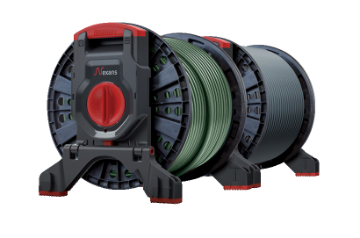- Products
- Markets
- Newsroom
- Tools & Resources
- CSR
- About Nexans
- Search
- Contact us
- Compare
- Sign in
Construction of cable cores according to IEC 60228

When we say a conductor has a “stranded core" or a "class 2 core" or "solid class 1", what’s this about? We explain it here. Cable cores are always constructed in accordance with the requirements of the IEC 60228 standard. They are subdivided into 4 classes, each with their own characteristics.
For which materials does IEC 60228 apply ?
- Copper and tinned copper: class 1, class 2, class 5 and class 6 are possible.
- Aluminium and aluminium alloys: class 1 and class 2 are possible. Classes 5 and 6 are not defined in IEC 60228.
Which are the classes in IEC 60228?
- Class 1: solid conductor: the core is formed by 1 single wire.
The nominal section is determined by the maximum DC resistance of the conductor at 20°C. - Class 2: stranded conductor: the core is formed by several wires that are stranded together into a "cord".
The nominal section is determined by a minimum number of wires and the maximum DC resistance at 20°C. - Class 5: flexible conductor: the core is formed by a large number of thin wires.
The nominal section is determined by the maximum diameter of the wires and the maximum DC resistance at 20°C. Note that class 5 has a higher resistance than class 2 cores with identical section. - Class 6: highly flexible conductor: the core is formed by even more and still finer wires.
The nominal section is determined by the maximum diameter of the wires and the maximum DC resistance at 20°C (Ω/km).
Classes 3 and 4 are not described in IEC 60228.
Related document

From this follows that a nominal cross-section is in fact a codified way of indicating the resistance of the conductor.
If you’d directly measure on a particular conductor its diameter and then calculate its cross-section (diameter² / 4 x π), you’d notice that the result would slightly vary from the nominal cross-section.
Our websites
Select your country to find our products and solutions
-
Africa
- Africa
- Ghana
- Ivory Coast
- Morocco
- North West Africa
- Americas
- Asia
- Europe
- Oceania


